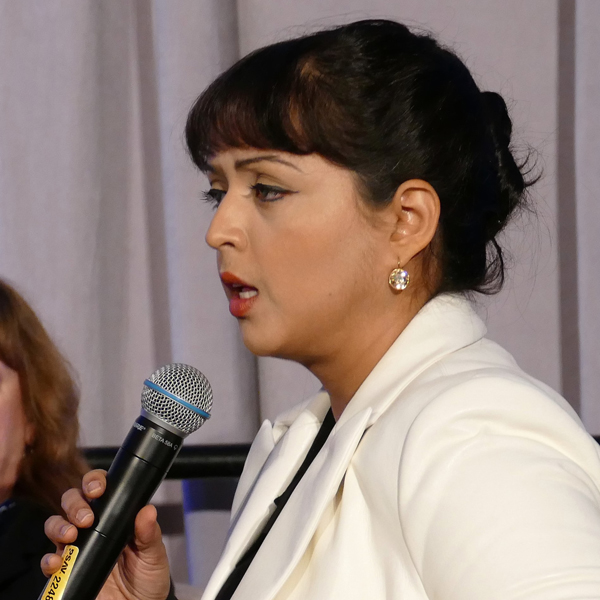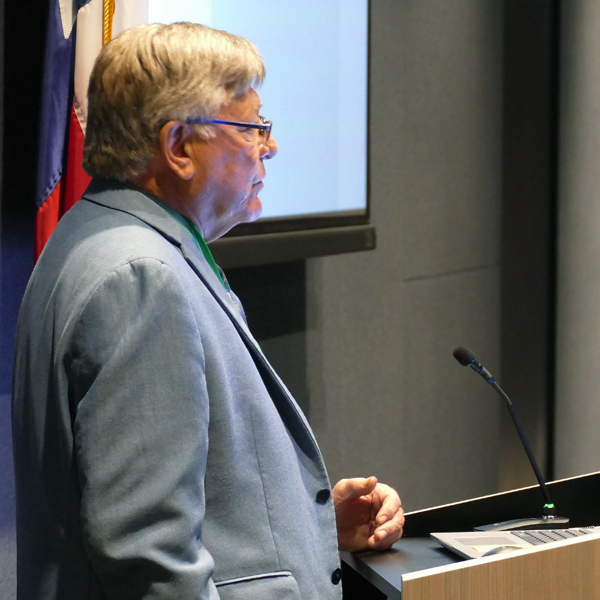Directors Approve Aggregated DER Pilot Project
AUSTIN, Texas — ERCOT’s Board of Directors last week approved a pilot project in which Texas energy providers can aggregate their customers’ small distributed energy resources and sell their extra energy back to the grid.
The directors voted unanimously Oct. 18 to approve the Aggregated Distributed Energy Resource Pilot Project. The project is intended to evaluate how aggregated DERs can support reliability, participate in the wholesale market and play a role in emergency situations.
“This is a great big historic moment for Texas,” tweeted Arushi Sharma Frank, Tesla’s (NASDAQ:TSLA) lead for U.S. energy markets policy. The pilot “will drive demand for DERs [and] retail competition, and prove out the technology solutions needed for a resilient grid.”
Frank and Tesla have played a key role in the project’s formation. Tesla conducted a virtual power plant demonstration with its Powerwall energy storage product in North Texas earlier this year, while Frank was involved in a Public Utility Commission task force on DERs and testified before the PUC.
 Arushi Sharma Frank, Tesla | © RTO Insider LLC
Arushi Sharma Frank, Tesla | © RTO Insider LLCThe commission in July directed ERCOT to develop the pilot. Focused on aggregations of individual sites that can inject or withdraw power from the grid in response to ERCOT instructions, the project will give the grid operator’s staff time to develop a full framework for aggregated DER participation (51603).
The pilot will be conducted in phases so that it can begin as quickly as possible while minimizing changes to ERCOT and distribution service provider systems. Future phases could introduce additional design elements “to help expand participation opportunities while still maintaining distribution and transmission grid reliability.”
“We wanted to find a way to allow these resources to participate in the markets without a significant expense to our system upfront,” said David Maggio, ERCOT’s director of market design and analytics.
The initial participation will be limited to 80 MW of registered capacity and 40 MW of non-spinning reserve service to establish limits by load zone and by qualified scheduling entities (QSEs), allowing for diverse geographical and technology participation. ERCOT staff can increase those limits.
The DERs will be dispatched in real time by ERCOT’s security-constrained economic dispatch on a zonal basis and settled using a zonal price. They will only be eligible to qualify for the non-spin ancillary service and offered into and awarded in the day-ahead and real-time markets, similar to the grid operator’s current process for aggregated load resources.
“From our point of view, we’ll see a single resource, a single bid into the market and single telemetry,” Maggio said. “It will look like every other resource we might see.”
The pilot will get underway in January when staff begin DER qualification testing. ERCOT expects the pilot to last at least three years.
PUC Chair Peter Lake said a key answer he is looking for is transmission costs.
“That’s a big question we’ll need to be answered before we put it on monthly bills for our ratepayers,” he said.
Vegas Lays out Priorities
Board Chair Paul Foster welcomed new ERCOT CEO Pablo Vegas to his first board meeting, saying that, “in a very short period of time … he is already beginning to put his mark on the organization.”
Vegas, who only stepped into his position on Oct. 1, said he has been working with the executive team on one of the key elements of his first 100 days, developing a “clear remote work policy.”
One of interim CEO Brad Jones’ first actions last year was to allow most non-operations staff to work from anywhere in Texas, in part to address retention issues it faced after the February 2021 winter storm that drew negative attention to the grid operator.
 ERCOT CEO Pablo Vegas delivers his first update to his Board of Directors. | © RTO Insider LLC
ERCOT CEO Pablo Vegas delivers his first update to his Board of Directors. | © RTO Insider LLC
“The next evolution of our remote work policy … will continue to focus on balancing, first and foremost, meeting all operational requirements of ERCOT without exception, preserving flexibility for employees whose job roles enable them to work remotely and focus on the continued strengthening of our corporate culture,” Vegas said.
His other 100-day priorities include meeting with key market, regulatory and legislative stakeholders and ensuring the grid is ready for this winter by deploying and executing on new and existing efforts. ERCOT has scheduled winter weatherization workshops Tuesday for transmission service providers and generation owners to review requirements in place following the 2021 winter storm.
Vegas echoed comments he has made in several settings since becoming CEO, saying the key to rebuilding trust in ERCOT is simply “the core of what our operational strategy is.”
“Only through consistent and successful execution under a variety of conditions and scenarios can we return the trust of all Texans that their grid is sound and reliable,” he said, pointing to the grid’s dozens of energy-usage operations during the summer.
“The grid has withstood those tests and passed, but this doesn’t mean that our work is done. It’s really just beginning,” Vegas added. “We’re going to continue executing our mission with the recent successes we’ve had. And we’ll continue to build on that as we move forward.”
Records Fall in Summer Heat
Staff said this past summer was a record-breaking one for both Texas and its grid operator.
Average temperatures from June through August (84.8 degrees Fahrenheit) were the second highest in the state dating back to 1895, exceeded only by 2011 (86.8 F). The heat, and the state’s continued growth, led to 33 demand records, highlighted by an all-time peak of 80.01 GW in July.
“It seemed like we were setting new peaks every day,” Dan Woodfin, vice president of system operations, told the board.
He noted ERCOT set monthly demand records in April and the next four months, using the fingers on one hand as he listed the months. ERCOT added its sixth monthly demand record of the year on Oct. 12 at 66.1 GW.
Staff had about 8 GW of additional installed wind and solar capacity to work with, resulting in higher hourly renewable generation than the year before. Thermal forced outages were also higher this summer than the previous, but only by an average of an extra generating unit from 2021.
Kenan Ögelman, vice president of commercial operations, told directors that while ERCOT did not have to issue any energy emergency alerts during the extreme heat, it did experience several scarcity intervals that led to operator actions. Ancillary services were almost doubled that of two years ago at some points, and the 2,573 total reliability unit commitment (RUC) hours was 10 times that of 2020’s summer.
“We’re using RUCs more than we do traditionally,” Ögelman said.
Asked whether staff were trying to minimize the use of RUCs, Ögelman said, “We’re trying to minimize, but not at the expense of reliability.”
Natural gas prices that reached $9/MMBtu and increased demand for energy led to increased prices. Load-weighted average prices were up over the previous two summers, exceeding $160/MWh in July.
TAC Shares Changes with R&M
Technical Advisory Committee members and ERCOT staff will continue to tweak its process for handling priority revision requests after meeting with the board’s Reliability and Markets Committee on Oct. 17.
TAC Vice Chair Bob Helton, of ENGIE, shared with the R&M his committee’s proposals to accelerate protocol changes that are stuck in the stakeholder process, qualifications for its members and changes to the credit working groups’ structure. (See ERCOT TAC Considers Membership Requirements, Process Changes.)
 Bob Helton, ENGIE | © RTO Insider LLC
Bob Helton, ENGIE | © RTO Insider LLCThe Credit Work Group (CWG) has reported to the board’s Finance and Audit Committee since 2004, but the R&M asked earlier this year that it hear market credit issues from ERCOT staff. The F&A has agreed to give up its market credit oversight responsibilities, with TAC agreeing to take on the role and proposing to consolidate it with its Market Credit Working Group, which reports to the Wholesale Market Subcommittee.
The R&M asked Helton to work with staff in formalizing the Independent Market Monitor’s role in the stakeholder process. The IMM is currently free to comment on revisions requests and participate in the discussions.
The board will vote on the TAC proposals during its December meeting.
Directors Approve Nine Rule Changes
The board passed six nodal protocol revision requests (NPRRs), a modification to the Nodal Operating Guide and two system change requests (SCRs) during the meeting:
- NPRR1058: requires quicker updates by QSEs to the telemetered resource status, high sustained limit (HSL) and other relevant information, improving the physical responsive capability calculation’s validity and dispatch.
- NPRR1084: allows ERCOT to publicly provide information about resources’ forced outages, forced derates and start-up loading failures in a more complete and timely manner.
- NPRR1118: clarifies the outage schedule adjustment (OSA) process to improve the terminology and clarifies the process for issuing advanced action notices and OSAs, as well as offer submission and RUC procedures after an OSA is issued.
- NPRR1127: clarifies which entities are required to have hotline and 24/7 communications with ERCOT, and requires those entities answer each hotline call to proactively ensure situational awareness during emergency situations.
- NPRR1139: replaces the usage of the wind-powered generation resource and photovoltaic generation resource productions with the HSL of an intermittent renewable resource as reflected in the current operating plan.
- NPRR1140: permits generation resources to recover their fuel costs when instructed to start because of an RUC and operate above the resource’s low sustained limit.
- NOGRR241: clarifies which entities are required to have hotline and 24/7 communications with ERCOT, and requires those entities answer each hotline call to proactively ensure situational awareness during emergency situations.
- SCR820: builds on the hotline communication process by developing a web-based platform supporting real-time, bidirectional, “send-review” messaging between ERCOT operators and transmission operators during emergency event coordination.
- SCR823: requests that ERCOT upload a flat file received from each affected transmission/distribution service provider (TDSP) that contains all their electric service identifiers (ESI), besides those that have been retired. This flat file would allow all retail electric providers to have county names associated to all ESIs on the very first day following the go-live of Texas SET V5.0 production.




